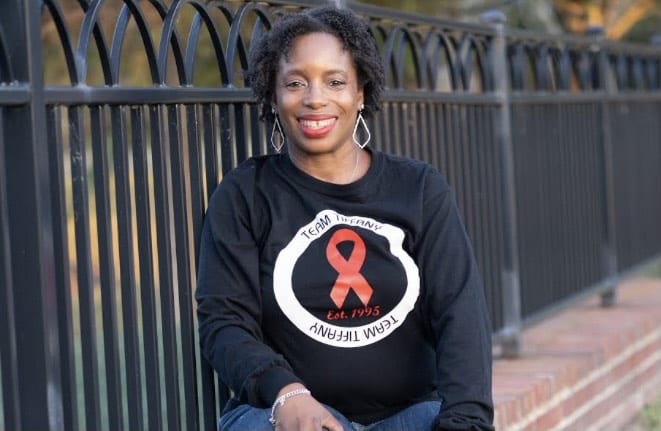By LJ Garfield
It’s no surprise that there is a disparity between the access to quality health care among Black women and white women. So, there shouldn’t be any surprise that there is also a disparity between the infection rates from cervical cancer among Black women and white women. Cervical cancer is silently trying to kill us and this article is to build awareness because we can no longer avoid the reality!
First, let’s review the female reproductive anatomy from inside out. Ovaries are the main reproductive organs nestled in the pelvic region of the body. The ovaries contain the ovum or eggs needed for reproduction. Fallopian tubes, also known as uterine tubes, are passageways for eggs to travel from the ovary to the uterus. The uterus is the organ that houses the developing fetus. The cervix is the narrow opening of the uterus which connects to the vagina. The vagina is the muscular canal leading from the internal structures to the external reproductive genitals.
https://www.cancer.gov/publications/dictionaries/cancer-terms/def/reproductive-system
Second, let’s get a better understanding about what cervical cancer is. Cancer in general is described as a family of diseases caused by overgrowth of abnormal cells on a specific part of the body. It develops when the body’s normal control mechanism stops working and old cells do not die, instead they grow out of control forming new abnormal cells. (1) Typically, cancer cells are destructive to healthy cells, hard to contain to one location, and even harder to eliminate from the body. Cervical cancer is a type of cancer that occurs on the cervix.
Next, let’s explore what can cause cervical cancer. An increased risk for developing cervical cancer is linked to past contamination from other types of infections like Sexually Transmitted Infection’s or STI’s that can damage healthy cells in reproductive organs.
In 2018 Texas saw an estimated 205,732 new cases of common STI’s like chlamydia, gonorrhea, and syphilis. Harris County ranked 1st in the state by population with the new cases of STI’s, with Dallas County following a close 2nd! (3) Sooooo…Know your partner’s STI status before you partake in sexual activity because it only takes contact with one infected body part to increase your personal risk for cervical cancer. But wait there’s more, those three STI’s are not the main culprits!
Exposure the Human Papillomanvirus (HPV) is the worst type of STI reported to play the leading role in causing most forms of cervical cancer. HPV is a group of similar viruses that are very common type of STI’s; so common that 79 million Americans are infected with it (3). This family of 200 plus viruses, 40 of which are associated with the reproductive tract, are responsible for causing cancer on other parts of the male and female reproductive organs including the anus, penis, and vagina. The main way to be exposed to HPV is through sexual contact especially if you have had sex with many partners or have had sex with someone that has many partners. Transmission from one person to another can occur during interaction with infected body parts. Close skin to skin contact without sex can also spread the disease, which is part of the reason why HPV is the worst!
After exposure, some people grow genital warts from low risk HPV infections. The warts are small, rough skin growths on the affected area. Sometimes they appear in clusters, other times they are so tiny they go unnoticed, either way treatment by a medical professional is recommended. Treatment includes oral medication, topical creams, surgical removal. Low risk viruses of HPV do NOT cause cancer nor do they have a cure, the warts just annoy you. Other people contract high risk HPV after exposure. High-risk viruses can cause abnormal cells to grow on the cervix, greatly increasing the chance of cancer.
https://www.powercells.ph/illness/genital+warts
Cervical cancer is reported to be one of the most preventable types of cancers in a family of devastating illnesses. Participating in safe sex is the most basic type of prevention from cervical cancer. Safe sex practices include vetting partners and confirming their STI status with documentation prior to sexual encounters. Using condoms and dental dams as barriers
during sex and oral sex also helps to reduce risks. Be advised that condoms do not cover all of the genital skin, so there are still some risk of infection due to skin to skin touching. Some protection is better than none! But, wait there’s more ways to reduce risks to protect yourself!
Enhanced prevention of cervical cancer includes using basic precautions but adds an annual pap smear with STI testing. Annual pap smears can detect changes in cervical cells that may be associated with cervical cancer. Pap smears can also identify the changes in cells early before they start growing out of control forming more abnormal cells.
Assertive prevention includes basic and enhanced prevention methods but adds the HPV vaccine. The vaccine is recommended prior to becoming sexually active because the vaccine cannot protect against a strain of HPV a person has already been exposed to (6). The Gardasil vaccine is recommended for males and females 9-45 years old. If the vaccine is given after a person is sexually active, an HPV screening is recommended before the vaccine is administered to confirm a negative HPV status.
A primary care physician, a family doctor or a gynecologist can provide more specific information and testing for STI’s and cervical cancer. In the meantime, be sure to pay attention to changes in the external genital, learn more about potential sexual partner’s history, and maintain good reproductive organs care to help reduce the disparity between HPV infection rates from cervical cancer among Black women and white women.







